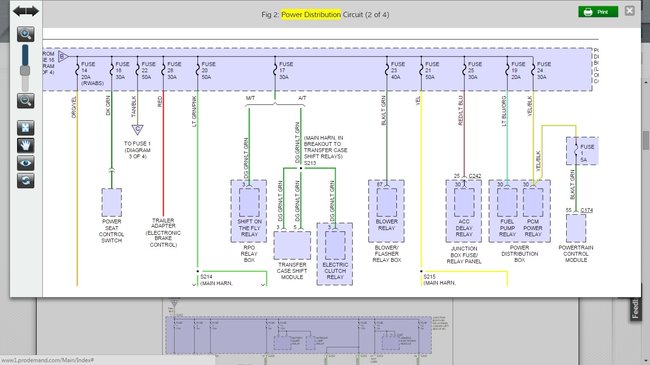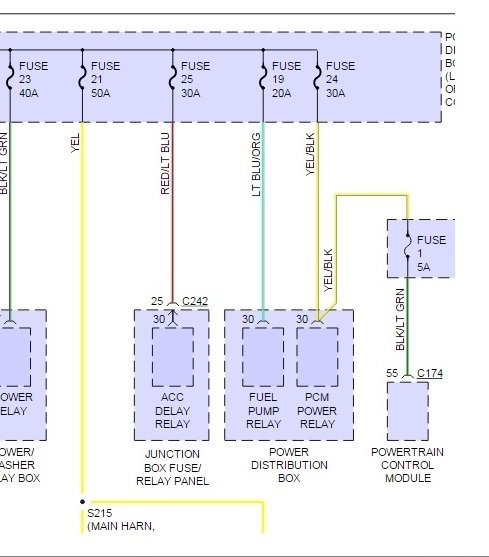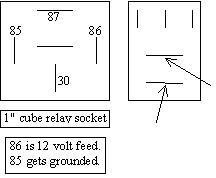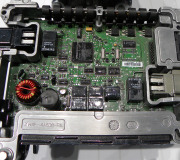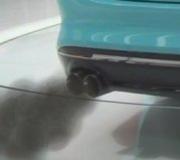I'm back, for a few minutes anyway, until the library closes. Yup, I had a house fire two years ago, I have asthma that is affected by cold temperatures, and it's below zero today! I try to get to town every other day in spite of the weather. Grrr!
Thanks CJ for providing the diagram. The short was not on the circuit protected by the one amp fuse because if it was, that is the fuse that would have been blowing. The short has to be on the output side of the PCM power relay. That relay turns on for one second after turning on the ignition switch, then again during engine rotation, (cranking or running). I'm cutting it close on time so I'll have to do this from memory, and from my experience with Chrysler products, which are similar for this circuit. Typically the relay sends 12 volts to the injectors, ignition coil(s), and oxygen sensor heaters. None of those things commonly short so you can expect to find a wiring problem instead. Probably the most likely suspect is a wiring harness that fell down onto hot exhaust parts and a wire melted through and grounded out. The next suspect would be a harness that slides back and forth as the engine rocks during acceleration, and a wire's insulation is rubbed through. It's hard to replicate that movement when the engine isn't under load. Instead, lift the harnesses up and look for shiny spots on the body where the paint has been rubbed off. Next, look for harnesses that are run over sharp edges of metal brackets.
If the short is not acting up now, whatever caused it was disturbed enough to make it stop, but that's not a fix. It's going to act up again at the least opportune time.
A simple trick to finding a short is to replace the blown fuse with a pair of spade terminals, then use small jumper wires to connect them to a 12 volt light bulb. A brake light bulb works well. When the circuit is live and the short is present, the bulb will be full brightness and hot so be sure it's not laying on the carpet or against a plastic door panel. Now you can unplug electrical connectors and move things around to see what makes the short go away. When it does, the bulb will get dim or go out.
A brake light bulb will limit current to about one amp which might not be enough for this circuit. The bulb may be close to full brightness when the circuit is working properly. In that case, use a head light bulb instead. A low-beam filament will allow five amps to pass.
Since the PCM power relay won't be on unless the engine is rotating, you'll need to bypass it to allow testing. In this case we're relegated to trying to turn a working circuit into one with a defect, and we'll still do that by wiggling wiring harnesses and moving things around.
Since the diagram shows voltage coming in on terminal # 30, I'm posting my sad drawing for a Chrysler relay that uses the same designations. You may find these numbers on the side or bottom of the relay, otherwise go by the locations of the terminals. Use a wire or stretched-out paper clip to jump terminals 30 and 87 together while the relay is unplugged. Be careful to not spread the terminals in the socket as that can add a new intermittent problem.
The injectors will all be off when no cranking is occurring, but the ignition coils and / or oxygen sensor heaters may be on and drawing current. I'm assuming at this point the engine was running okay and the fuse wasn't blowing, so if the test bulb is fairly bright, it's because of those O2 sensor heaters or ignition coils. Unplug the ignition coils' primary connectors. You should see the test bulb get a tiny amount dimmer with each thing you unplug. If necessary, you might have to unplug the O2 sensors too. The goal is to get the test bulb to be dimmer than normal or out completely, then start wiggling and moving things. If you do something that makes the short occur, the test bulb will get full brightness. If wiggling things doesn't work, try banging around the engine with a rubber hammer.
Image (Click to make bigger)
Monday, January 18th, 2016 AT 6:12 PM

